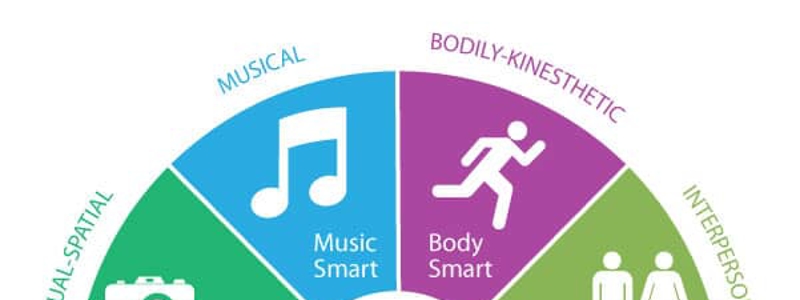Multiple-Intelligences
Traditionally, intelligence was rated using a traditional IQ test which was limited, focusing on verbal intelligence (linguistic) and logical intelligence (mathematical). But each individual has a uniquely wired brain! As our understanding of the brain improves, scientists are learning that there are many ways to identify intelligence.
Think of artists, athletes, chess champions, dancers, musicians, naturalists, therapists; all of these people have a special kind of intelligence that simply isn’t always reflected in their grades in school or on an IQ test. Instead, a theory by Howard Gardner from Harvard University postulates that we have eight different kinds of intelligences that help to enrich the world in which we live. Everyone possesses all eight of the intelligences in varying degrees of aptitude, some areas stronger than other areas.
These include:
- Verbal-linguistic intelligence
- Logical-mathematical intelligence
- Visual-spatial intelligence
- Musical intelligence
- Naturalistic intelligence
- Bodily-kinesthetic intelligence
- Interpersonal intelligence
- Intrapersonal intelligence
No educator can be expected to cover all the intelligences in a lesson nor do they have the time to develop these in each of their students. The theory was originally intended to challenge the linear way of thinking about intelligence in the psychological sphere. Instead, it has been educators who have championed this theory, and have started to bring different teaching methods into the classroom and to re-design the way students are educated. For example using music, cooperative learning, art activities, role play, multimedia, field trips, inner reflection, and much more are ways to teach students whose minds may be stronger in some of the more non-traditional intelligences.
When working one-to-one with students, educators can see that while students may not have strong language skills, they have an aptitude for numbers or music. They see that there are different types of intelligences that are just not accounted for in a traditional IQ test. This is a big shift in education in our schools, and many still are using the old, traditional teaching techniques. Our challenge is to bring the theory of multiple intelligences to more schools and get the acceptance and approval of the boards to implement new teaching methods.
Scott Seider, from Boston University: “The IQ test and the SAT®, two assessments unquestionably correlated with an individual’s class status and schooling opportunities, have been utilized to declare some children intrinsically “smarter” than others and more deserving of seats in gifted-and-talented programs, magnet schools, and elite universities. Particularly in urban schools, the pressure from testing has narrowed the curriculum to focus on those subjects on which graduation and accreditation rest — at the expense of art, music, theater, physical education, foreign language, and even science and social studies.”
While further research is necessary to better understand the different types of intelligences, it does help teachers and tutors to understand that students learn differently. Class lessons or in one-to-one tutoring sessions should be presented in a variety of ways so that everyone can understand.
Students should also be encouraged to develop all aspects of their brains so that they are well-rounded instead of focusing on those areas which lead to high IQ scores and test scores.
As a society, we have to start recognizing and supporting the value of different types of intelligences so that we broaden our idea of what ‘smart’ is to include people with intelligences that aren’t only based on reading and math skills.

